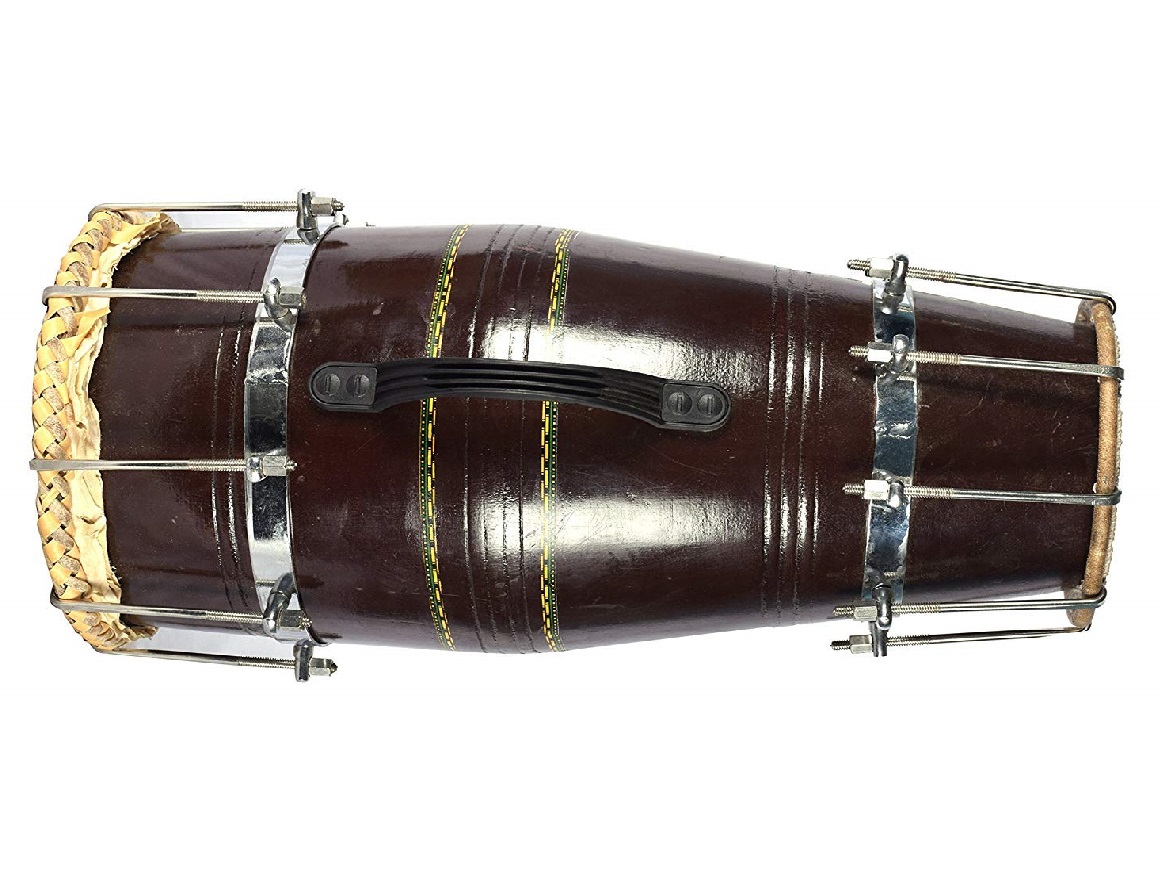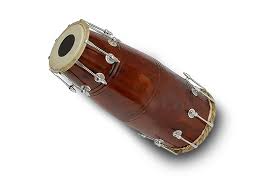Naal
Percussions
Asia
Between 1001 and 1900 AD
Video
The naal is a traditional percussion instrument from India, recognized for its unique construction and versatile sound. It features a barrel-shaped body and is played with both hands, producing a rich array of rhythmic patterns. The naal is especially popular in folk music and during celebratory events such as weddings and festivals. It serves as a vital part of various musical ensembles, complementing other instruments like the dholak and tabla.
Type of Instrument
Classified as a membranophone, the Naal produces sound through the vibration of its drumheads when struck. It falls under the Hornbostel-Sachs classification 211.22, which categorizes it as a barrel drum with two usable membranes. The naal is characterized by its hybrid nature, combining elements of both the tabla and dholak, allowing it to produce high-pitched and low-pitched sounds.
History
The history of the Naal can be traced back to ancient times, with its roots deeply embedded in the Indian subcontinent. While precise dating is challenging, it is believed that this instrument has been in use since at least the 16th century, evolving alongside the rich tapestry of Indian music. The Naal shares similarities with other traditional drums like the Pakhawaj and Dholak, indicating its place within a broader family of percussion instruments. Its construction and playing techniques have been influenced by various regional styles, contributing to its unique sound and cultural significance.The Naal’s prominence in folk music is particularly noted during celebrations and rituals, where it serves as a rhythmic backbone that enhances communal participation. In many rural communities, the Naal is integral to storytelling through music, often accompanying traditional dances and songs that narrate local legends and cultural tales. As such, it has become an essential part of the social fabric, facilitating not only entertainment but also the preservation of cultural heritage.
Made Of
The construction of the Naal involves a combination of locally sourced materials that contribute to its distinctive sound quality. The body of the Naal is typically made from wood, with craftsmen often using Neem or rosewood due to their durability and resonance. The drumheads are traditionally made from goatskin, which is secured to the wooden frame using metal nuts and bolts. This hardware allows for precise tuning, enabling players to adjust the tension of the drumheads for optimal sound production.In some variations, especially those found in Orissa and Gujarat, the Naal may also be constructed with a barrel-shaped clay body covered with parchment or cotton. This design features skin-covered heads braced with thick cotton ropes through hoops, allowing for a unique tonal quality that differs from its wooden counterparts. The combination of materials used in crafting the Naal not only affects its sound but also its aesthetic appeal, as many instruments are beautifully decorated or finished to reflect regional artistry.
Features
The naal possesses several distinctive features:
- Barrel Shape: This design enhances resonance and sound projection.
- Dual Drumheads: Each head serves different tonal purposes; one produces sharp notes while the other offers deeper bass sounds.
- Animal Skin Membranes: These natural materials contribute to tonal quality and responsiveness.
- Tuning Mechanism: The use of nuts and bolts allows players to easily adjust pitch.
- Playing Position: Typically held horizontally while being played with both hands.
These features make the naal an essential instrument in Indian music.
Sound Production
Sound production on the naal occurs when players strike its two heads with their hands. The right head produces higher-pitched sounds akin to those of a tabla, while the left head generates deeper bass tones similar to those of a dholak. Players can create intricate rhythms by varying their striking techniques and utilizing different parts of their hands.The interplay between these two heads allows for complex rhythmic patterns that are characteristic of Indian folk music. The tuning adjustments made through nuts and bolts further enhance sound production, enabling musicians to tailor their performance according to specific musical contexts.
Playing Methods
Playing methods for the Naal vary depending on regional styles and personal preferences. Musicians typically hold the instrument horizontally at waist level while seated or standing. The primary playing techniques include:
Hand Techniques: Players use their palms and fingers to strike different areas of each drumhead. Techniques such as open strikes (using flat hands) create resonant sounds, while finger taps yield sharper tones.
Stick Playing: In some contexts, drummers may use mallets or sticks for added volume or specific rhythmic patterns.
Rhythmic Patterns: The Naal is often played in syncopated rhythms that complement other instruments within an ensemble setting. Musicians learn these patterns through oral tradition or formal instruction.
These methods allow players to express their creativity while adhering to traditional rhythmic structures inherent in folk music.
Roles in Music
The Naal plays an integral role in various musical contexts throughout India:
Folk Music: It serves as a primary percussion instrument in regional folk traditions across states like Gujarat and Orissa. During festivals and celebrations, it enhances communal participation by encouraging dance and singing.
Ceremonial Use: In weddings and religious ceremonies, the Naal provides rhythmic support that elevates the celebratory atmosphere. Its vibrant sound often accompanies processions and rituals.
Cultural Identity: The presence of the Naal within local music scenes helps preserve cultural heritage by connecting communities through shared musical experiences. It acts as a vehicle for storytelling, allowing musicians to convey historical narratives through rhythm and melody.
Contemporary Fusion: In recent years, musicians have begun incorporating the Naal into contemporary genres such as fusion music, world music ensembles, and even popular music contexts. Its adaptability allows it to blend seamlessly with various instruments while maintaining its distinct character.
.
FAQ
What are the key features of the Naal instrument?
The Naal features a barrel-shaped body made from hardwood with dual drumheads covered in animal skin. One head produces high-pitched sounds similar to a tabla while the other generates deeper bass tones like those of a dholak. It also includes a tuning mechanism using nuts and bolts for pitch adjustments.
What role does Naal play in Indian music?
The Naal serves as a rhythmic foundation in various musical genres, providing a steady beat that supports melodic instruments. It is integral to cultural celebrations and religious ceremonies in India, enhancing vocal performances through dynamic rhythmic patterns.
Who are some famous players of the Naal?
Notable players include Ustad Zakir Hussain, known for his mastery over Indian percussion instruments including Naal. Other prominent musicians have incorporated Naal into their performances across genres like folk music and contemporary Indian classical music.
 Links
Links
References
Other Instrument
Categories



















